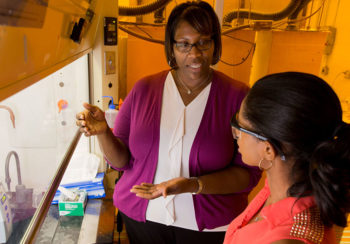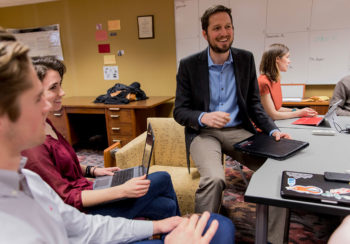May 10, 2016
Researchers at the UGA College of Engineering are working to bring greater accuracy to the navigation systems used to guide unmanned aircraft known as drones.
The team, which is led by assistant professor Zion Tse and includes postdoctoral research fellow Stan Gregory and graduate research assistant Kevin Wu, has designed and tested a prototype that employs ultrasound technology to help drone operators map the interior of large structures and guide their craft to specific locations within it.
Conventional “GPS technology isn’t a good option for what we’re trying to accomplish because it’s not very reliable indoors,” Wu said. “The margin of error can be up to 5 meters, which is fine if you’re driving your car and dealing with a scale of miles.” But when drones are inside a building, he said, “they need a much higher degree of precision.”
In much the same way a bat navigates in dark spaces, the system’s onboard ultrasound sensors relay information on the drone’s location to a computer, which plots the area and tracks the device’s position for the benefit of the operator.
The team’s work is supported by the Southern Company, one of the nation’s largest energy firms, which plans to use unmanned aircraft to enhance safety for crews in the field and improve reliability for customers. Thus, according to Gregory, he and his colleagues will test their guidance and mapping system for the first time this spring at Southern Power’s Plant Franklin on the Alabama-Georgia border in Smiths, Alabama.
Southern Power is a subsidiary of the Southern Company, and Plant Franklin is designed to capture waste heat from its primary combustion turbines and use the heat to increase the plant’s efficiency. This process happens in an area known as a heat recovery steam generator. Plant Franklin’s three heat recovery steam generator units are 20 feet long, 20 feet wide and reach 70 feet high. The inside of each unit is covered with large, specially treated steel plates.
During traditional maintenance-related plant outages, when the heat recovery steam generator units are inspected, workers construct temporary scaffolding so that inspectors may climb along the inside walls to look for potential problem areas.
The team’s system is designed to streamline this process. “The inspection drone will reduce cost and plant downtime by allowing a single inspector to assess the recovery system without the need for scaffolding,” Tse said.







